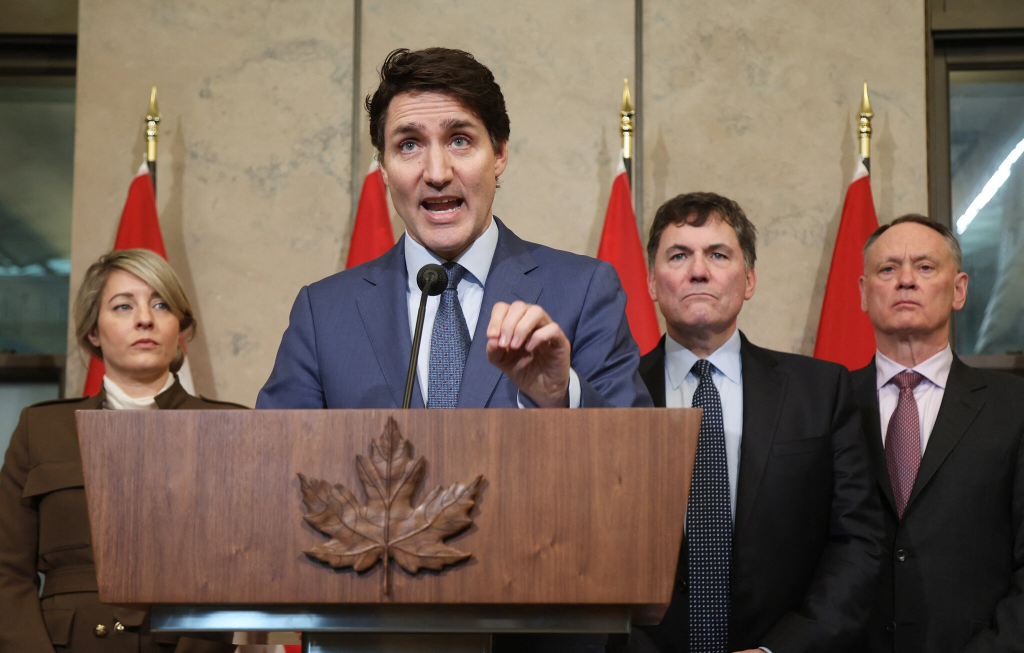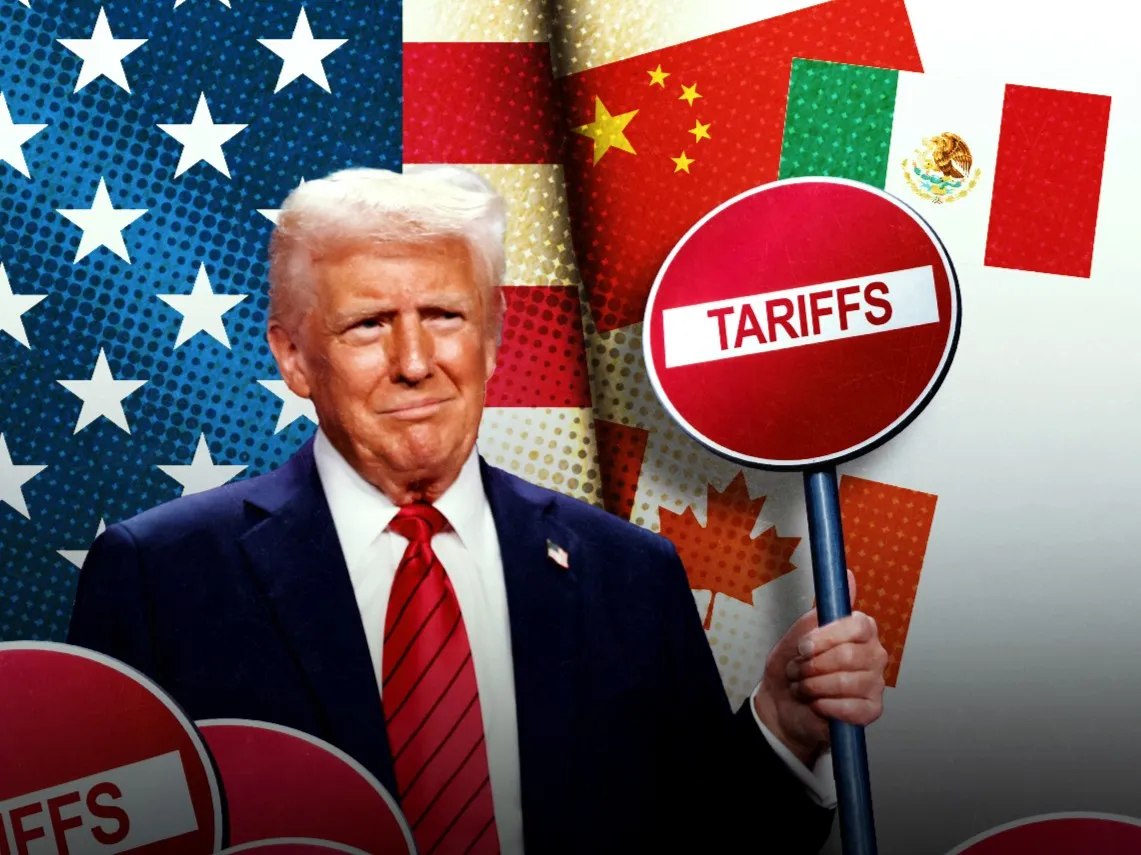When former President Donald Trump launched his bold tariff strategy in 2018, most headlines focused on the escalating U.S.-China trade war. But the global impact extended far beyond those two economic giants. Allies and key trading partners such as Mexico, Canada, India, and Japan also found themselves in the crosshairs—or caught in the fallout—of sweeping trade restrictions, especially under Section 232 national security tariffs on steel and aluminum. Explore the global fallout of Trump tariffs beyond China, focusing on Mexico, Canada, India, and Japan. A detailed look at trade disruption, retaliation, and long-term consequences. This blog explores how these lesser-covered countries navigated the tariff storm—how their economies, industries, and diplomatic relations with the U.S. were affected—and what the long-term consequences might be.
While the Trump administration argued that these measures were necessary to restore fairness and revive American manufacturing, many affected nations viewed them as arbitrary, even hostile. Retaliation came swiftly in the form of counter-tariffs, trade disputes at the World Trade Organization (WTO), and intensified efforts to diversify away from U.S.-centric supply chains.
Canada: A Fractured Friendship Over Steel and Aluminum
What Happened:
- In March 2018, the U.S. imposed 25% tariffs on steel and 10% on aluminum imports under Section 232.
- Initially applied globally, the tariffs were briefly lifted for Canada and Mexico, but reimposed in June 2018.
- Canada retaliated with dollar-for-dollar tariffs on $12.6 billion in U.S. exports.
Affected Sectors:
| U.S. Tariffs on Canada | Canadian Retaliation | Impact |
|---|---|---|
| Steel, aluminum | Whiskey, ketchup, plywood | Increased material costs for manufacturers on both sides |
| Washing machines, yogurt | Consumer prices rose; cross-border supply chains disrupted |
Economic Fallout:
- Canada is the largest supplier of steel and aluminum to the U.S..
- Tariffs disrupted auto manufacturing, a highly integrated North American industry.
- Canada’s GDP growth slowed to 1.7% in 2019, down from 3.2% in 2017.
Mexico: Tariffs in the Shadow of NAFTA
What Happened:
- Like Canada, Mexico faced Section 232 tariffs in June 2018.
- Retaliated with duties on pork, apples, cheese, and bourbon—targeting U.S. agricultural exports.
- Tariff threats were compounded by immigration policy disputes, including the threat of 5% tariffs on all Mexican imports in 2019.
Key Impacts:
| Sector | Mexican Retaliation Target | U.S. Export Loss (2018–2019) |
|---|---|---|
| Pork | Yes | -23% |
| Cheese | Yes | -19% |
| Apples | Yes | -17% |
Diplomatic Fallout:
- Mexican officials negotiated the USMCA (new NAFTA) under immense pressure.
- Despite tension, the trade agreement was seen as a stabilization tool by 2020.
India: Revoked Preferences and Tariff Retaliation
What Happened:
- In June 2019, the U.S. revoked India’s benefits under the Generalized System of Preferences (GSP), affecting $5.6 billion in exports.
- Cited India’s barriers to U.S. medical devices and dairy products.
- India retaliated with tariffs on 28 U.S. products, including almonds, apples, and walnuts.
Trade Impact:
| Metric | 2018 | 2020 | Change (%) |
|---|---|---|---|
| U.S. Exports to India | $33.6 billion | $27.4 billion | -18.4% |
| Indian Exports to U.S. | $54.3 billion | $51.2 billion | -5.7% |
| Almond Exports (CA) | $615 million | $498 million | -19% |
Policy Consequences:
- India pursued closer trade ties with the EU, ASEAN, and launched ‘Atmanirbhar Bharat’ to boost domestic production.
Japan: Economic Ally Caught in Crossfire
What Happened:
- Japan was also hit by steel and aluminum tariffs in 2018, despite being a longstanding U.S. ally.
- Chose not to retaliate with tariffs, but expressed diplomatic opposition.
- The two nations entered bilateral talks, culminating in the U.S.–Japan Trade Agreement (2019).
Economic Strain:
- Japan is a major exporter of steel, auto parts, and electronics to the U.S.
- Tariffs added cost pressures to Japanese manufacturers like Toyota and Hitachi operating in North America.
Trade Agreement Highlights:
- Reduced tariffs on U.S. agricultural products.
- Japan retained access for auto exports, avoiding Trump’s threatened 25% duties.
| Trade Metric | 2018 | 2020 | Change (%) |
|---|---|---|---|
| U.S. Exports to Japan | $75B | $63B | -16% |
| Japan Exports to U.S. | $142B | $134B | -5.6% |
Trump Tariffs Global Consequences: A Fractured Trade System

The effects of Trump’s tariff strategy on these four nations highlight several larger trends:
- Fragmentation of the Rules-Based System:
- WTO challenged by unilateral actions; legal authority weakened.
- Multilateralism gave way to bilateral negotiation pressure.
- Rise of Regionalism:
- Countries like India and Mexico diversified trade partners.
- Japan deepened ties with CPTPP (Comprehensive and Progressive Agreement for Trans-Pacific Partnership).
- Disruption of Supply Chains:
- North American and Asian supply networks saw re-routing.
- Long-term emphasis shifted to resilience over cost-efficiency.
- Erosion of Trust Among Allies:
- Canada, Mexico, and Japan questioned the reliability of U.S. economic commitments.
- India re-evaluated strategic alignment in light of unpredictable policy swings.
Conclusion:
Trump tariffs strategy was aimed at reviving U.S. industry and addressing imbalances—but in doing so, it disrupted global trade dynamics far beyond China. Countries like Canada, Mexico, India, and Japan—each a strategic partner in different ways—faced real economic and political costs.
Some were able to negotiate short-term deals or shift supply lines, but the long-term result has been a fracturing of the U.S.-centered trade order. These nations diversified their partnerships, hardened their economic policies, and deepened internal capabilities in ways that will define future trade patterns.
Mattias Knutsson, Strategic Leader in Global Procurement and Business Development, reflects:
“Tariffs may seem like quick wins politically, but globally they trigger waves of recalibration. Strategic allies like India and Japan don’t forget overnight. Future trade must be rebuilt on trust, reciprocity, and predictability—or it risks collapsing into competitive isolation.”
The Trump tariffs legacy remains a warning: even targeted protectionism has global consequences. As new challenges like digital trade, AI, and climate-linked tariffs arise, the next phase of trade diplomacy must strive not only for leverage—but for balance.
Trumps Tariffs Trade War Series:
Historical Background
- From Protection to Prosperity: The Role of Tariffs in Financing Early America
- The Tariff Battles of the 19th Century: Industrial Growth and Political Divide
- How Tariffs Built Railroads, Factories, and the American Dream (1800–1912)
Background to Today’s Tariffs
- From Smoot-Hawley to the WTO: A Century of Trade Policy Shifts
- The Rise of Free Trade and the Decline of Tariffs: 1945 to 2000
- The Tariff Comeback: Why Tariffs Returned as a Political Weapon in the 21st Century
Trump Tariffs Deep Dive: Trade Wars with the EU, China, and Beyond
- Trump’s Tariff Strategy: National Security or Economic Gamble?
- EU Under Pressure: Wine, Steel, and the Automotive Tariff Threat
- The U.S.-China Trade War Timeline: From Tariff Waves to Tech Decoupling
- Collateral Damage: How Trump Tariffs Affected Mexico, Canada, India, and Japan
Country-by-Country Response Monitoring: Reactions to Trump’s 2025 Tariff Hike
- China Strikes Back: Export Controls, Rare Earths, and Consumer Tech Retaliation
- European Union’s Balancing Act: Strategic Patience or Trade Fight Ahead?
- Japan and South Korea: Strategic Allies or Silent Rivals in Tariff Diplomacy?
- ASEAN & India: Winners or Losers in the Tariff Shuffle?
- South America’s Role in a Polarized Trade World
Ongoing Monitoring and News Reaction: Tracking Trump’s Tariffs in Real-Time
- Week-by-Week: The Global Market Reaction to Trump’s 2025 Tariff Policy
- U.S. Companies Caught in the Crossfire: How Businesses Are Adjusting to Tariff Shocks
- From Retail to Rare Earths: Key Sectors Most Affected by New Tariffs
- Trade Talks Tracker: Are New Negotiations a Signal of Resolution or More Chaos?
- Inside the Beltway: How Congress, Lobbyists, and Think Tanks are Shaping the Tariff Narrative





